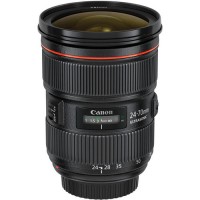Since this is timely, I’m interrupting the “usual stuff” on the blog to share…
Site sponsor B&H reports that a number of Canon, Nikon, and Sony promotion/rebate offers are ending*… and that they will not be extended. There are also rumors floating about that Canon is going to try to return to enforcing MAP (minimum advertised pricing) on their photography equipment in April, and that this could make it more difficult to find bargains for a while.
*IMPORTANT: The B&H website will NOT accept orders between Friday March 28 at 7:15 PM EDT and Saturday, March 19 at 8:45PM EDT. For many of you, this may make TODAY the final day to order!
- Nikon “Great Savings on Camera and Lens Bundles” – This offer provides savings on lenses when purchased with many Nikon DSLRs, including D3200, D5200, D5300, D7000, D7100, D610, D800, D800E, and Df
- Canon “Save Big on L Type Lenses” – Significant rebates on a wide range of Canon L lenses (no camera purchase required) including primes, zooms, wide angle, telephoto, macro lenses
- “Save up to $600″ on Sony a7 series bundles – a7, a7R bodies with a variety of lenses and electronic flash
Follow these links for full details.
 G Dan Mitchell is a California photographer and visual opportunist whose subjects include the Pacific coast, redwood forests, central California oak/grasslands, the Sierra Nevada, California deserts, urban landscapes, night photography, and more.
G Dan Mitchell is a California photographer and visual opportunist whose subjects include the Pacific coast, redwood forests, central California oak/grasslands, the Sierra Nevada, California deserts, urban landscapes, night photography, and more.
Blog | About | Flickr | Twitter | Facebook | Google+ | 500px.com | LinkedIn | Email
Text, photographs, and other media are © Copyright G Dan Mitchell (or others when indicated) and are not in the public domain and may not be used on websites, blogs, or in other media without advance permission from G Dan Mitchell.



